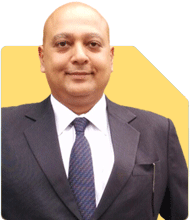Ramalingam Kalirajan |8083 Answers |Ask -Follow
Mutual Funds, Financial Planning Expert - Answered on May 09, 2024
He has an MBA in finance from the University of Madras and is a certified financial planner.
He is the director and chief financial planner at Holistic Investment, a Chennai-based firm that offers financial planning and wealth management advice.... more

Hi I have a home loan of 82 lakhs for 24 years and I pay monthly emi of 63952. My age is 36 and Iam single. I have an SIP where i contribute 2000 per month and my net salary is 162000 per month. So apart from emi there are other household expenses( utility bills, maintenance, grocery) that would cost me around 40000 per month. I do have another flat for which I receive rent of 5000. Can you please advise steps for better financial stability
1. Budgeting: Start by creating a detailed budget that includes all your expenses, including EMIs, household expenses, and utilities. Track your spending to identify areas where you can potentially save money.
2. Emergency Fund: Build an emergency fund equivalent to at least 3-6 months of your living expenses. This fund will provide a financial cushion in case of unexpected events like job loss or medical emergencies.
3. Debt Management: Since you have a significant home loan, focus on managing this debt effectively. Consider making occasional lump-sum payments towards the principal amount to reduce the interest burden and shorten the loan tenure.
4. Increase Income: Explore opportunities to increase your income, such as taking up freelance work or pursuing higher education or certifications that could lead to salary increments or better job prospects.
5. Investment Planning: Review your current investments and assess whether they align with your financial goals and risk tolerance. Consider diversifying your investment portfolio across different asset classes like equity, debt, and real estate to spread risk and maximize returns.
6. Retirement Planning: Start planning for your retirement early by contributing to retirement accounts like EPF or PPF, in addition to your SIP. Aim to build a sizable retirement corpus that will sustain your lifestyle post-retirement.
7. Insurance Coverage: Ensure you have adequate insurance coverage, including health insurance and life insurance. This will protect you and your dependents financially in case of any unforeseen circumstances.
8. Rental Income: Since you receive rental income from your other flat, consider utilizing this income to supplement your monthly cash flow or to accelerate your debt repayment.
9. Review Expenses: Regularly review your expenses and look for opportunities to cut costs without compromising your quality of life. Consider negotiating with service providers for better deals or eliminating discretionary expenses that are not essential.
10. Seek Professional Advice: Consider consulting with a Certified Financial Planner who can assess your financial situation holistically and provide personalized advice tailored to your goals and circumstances.
By implementing these steps systematically, you can work towards achieving better financial stability and securing your future.
Best Regards,
K. Ramalingam, MBA, CFP,
Chief Financial Planner,
www.holisticinvestment.in
You may like to see similar questions and answers below
Harsh Roongta | Answer |Ask -Follow
Answered on Dec 24, 2019
Ramalingam Kalirajan |8083 Answers |Ask -Follow
Mutual Funds, Financial Planning Expert - Answered on Jun 16, 2024
Ramalingam Kalirajan |8083 Answers |Ask -Follow
Mutual Funds, Financial Planning Expert - Answered on Nov 04, 2024
Ramalingam Kalirajan |8083 Answers |Ask -Follow
Mutual Funds, Financial Planning Expert - Answered on Jan 29, 2025
Rajesh Kumar Singh |150 Answers |Ask -Follow
IIT-JEE, GATE Expert - Answered on Mar 06, 2025
Rajesh Kumar Singh |150 Answers |Ask -Follow
IIT-JEE, GATE Expert - Answered on Mar 06, 2025
Rajesh Kumar Singh |150 Answers |Ask -Follow
IIT-JEE, GATE Expert - Answered on Mar 06, 2025
Rajesh Kumar Singh |150 Answers |Ask -Follow
IIT-JEE, GATE Expert - Answered on Mar 06, 2025
Sushil Sukhwani |588 Answers |Ask -Follow
Study Abroad Expert - Answered on Mar 06, 2025
Radheshyam Zanwar |1340 Answers |Ask -Follow
MHT-CET, IIT-JEE, NEET-UG Expert - Answered on Mar 06, 2025
Mayank Chandel |2086 Answers |Ask -Follow
IIT-JEE, NEET-UG, SAT, CLAT, CA, CS Exam Expert - Answered on Mar 06, 2025
Rajesh Kumar Singh |150 Answers |Ask -Follow
IIT-JEE, GATE Expert - Answered on Mar 06, 2025

Radheshyam Zanwar |1340 Answers |Ask -Follow
MHT-CET, IIT-JEE, NEET-UG Expert - Answered on Mar 06, 2025
Rajesh Kumar Singh |150 Answers |Ask -Follow
IIT-JEE, GATE Expert - Answered on Mar 06, 2025






















